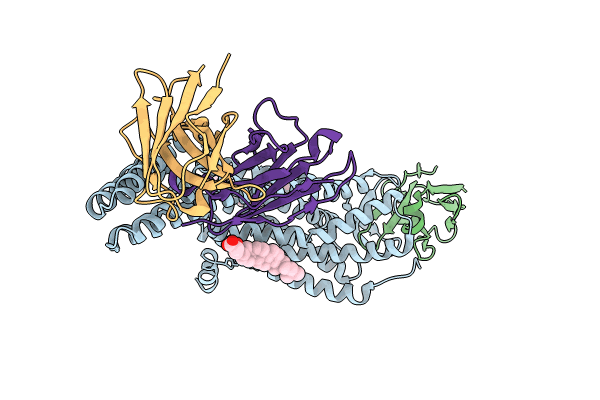
Deposition Date
2023-07-13
Release Date
2024-05-22
Last Version Date
2024-12-04
Entry Detail
PDB ID:
8TH3
Keywords:
Title:
Structure of AT118-H Nanobody Antagonist in Complex with the Angiotensin II Type I Receptor
Biological Source:
Source Organism:
Camelidae (Taxon ID: 9835)
Homo sapiens (Taxon ID: 9606)
Escherichia coli (Taxon ID: 562)
synthetic construct (Taxon ID: 32630)
Homo sapiens (Taxon ID: 9606)
Escherichia coli (Taxon ID: 562)
synthetic construct (Taxon ID: 32630)
Host Organism:
Method Details:
Experimental Method:
Resolution:
3.00 Å
Aggregation State:
PARTICLE
Reconstruction Method:
SINGLE PARTICLE


